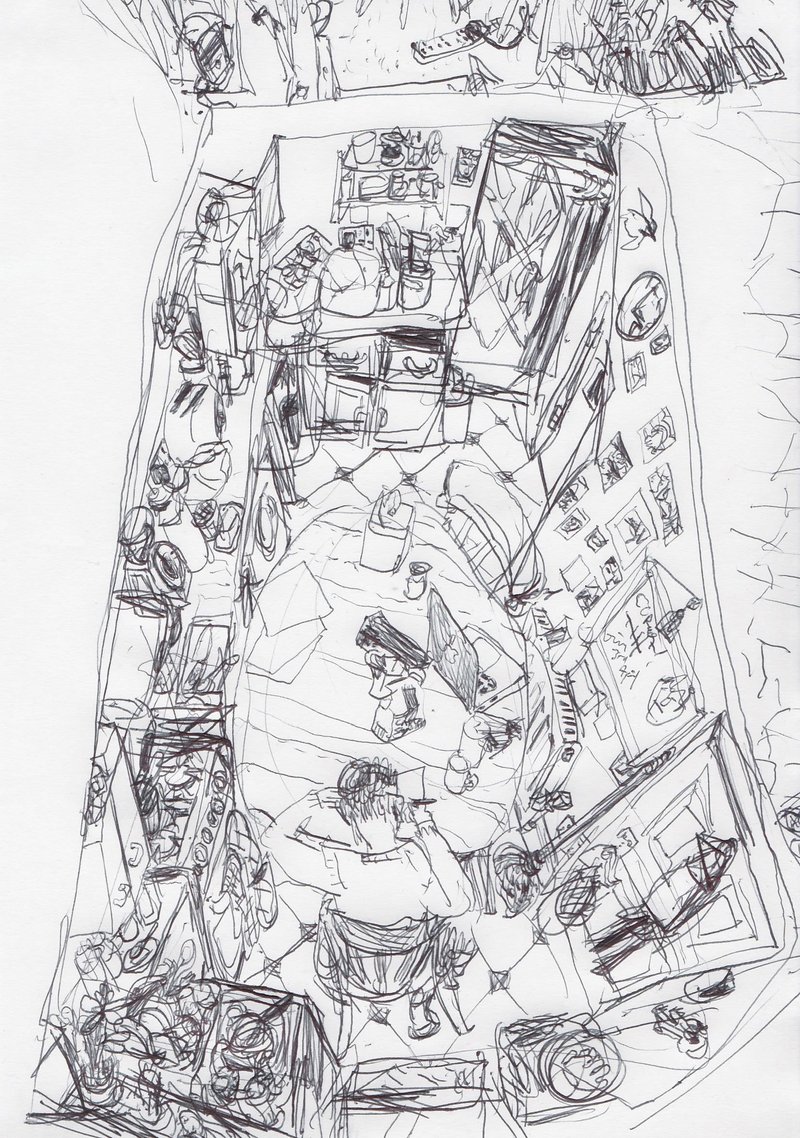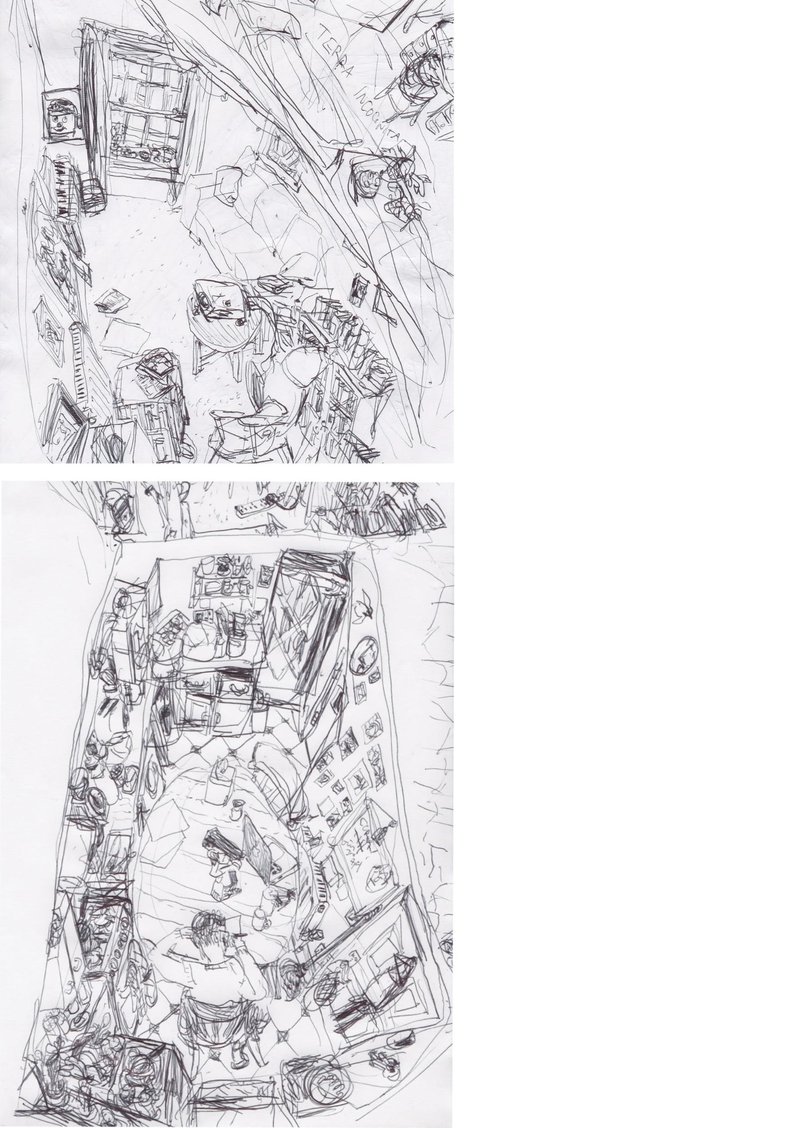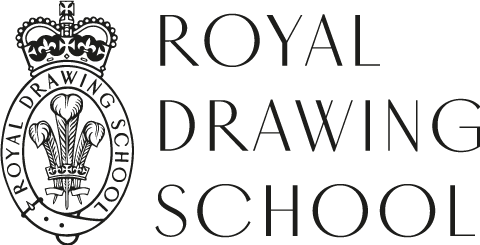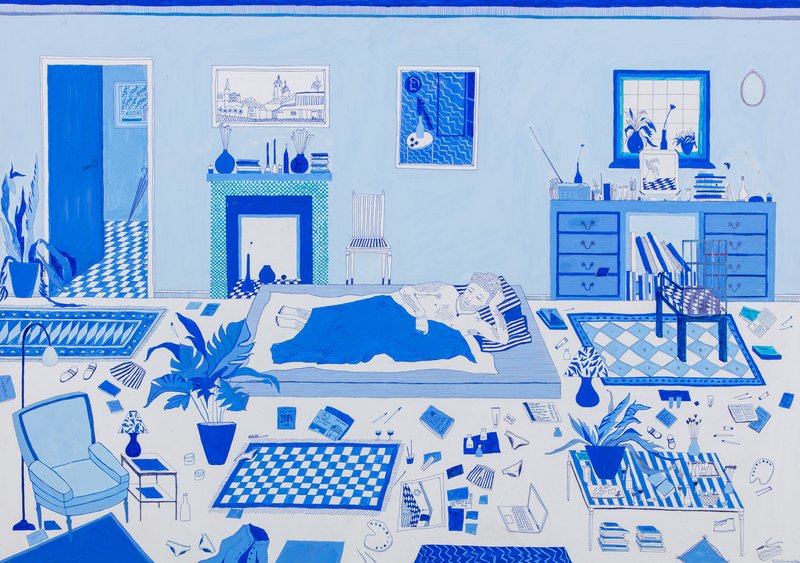Drawing Your Home: Young Artists Exercise II
Young Artists tutor Paul Fenner wants young artists to explore their surroundings using the power of memory and drawing.
Drawing a Memory Map
Paul Fenner, Young Artists tutor
Our houses seem as familiar to us as our own faces, especially now that we are having to spend all of our time in them. But how much can we recall in a drawing? In this first session you will make a memory drawing of the whole of the inside of your house, starting with one room occupying one A4 sheet of paper, then adding more and more sheets as you join on the other rooms.
Rather than a straight-forward recording of the interiors of your home, this drawing will be about the feeling of your house as you move from room to room.
You can take as much time as you wish for this drawing - after all there's no need to hurry - but try and avoid leaving the room until you have finished.
Where: indoors
With: Paper (loose A4 sheets, as many sheets as rooms in your house) and drawing tools (pencils, pen, whatever you like to draw with). You might want some sticky tape so you can tape your A4 sheets together but it's not essential.
What will I end up with: A multiple page memory drawing of your home
How:
1. Choose a room to work in. lay your paper and drawing tools out on the table or the floor in front of you. The first drawing is A4 sheet number 1: the room where you are drawing.
2. Starting with the tops of the walls, draw the 'box' of the room you are sitting in.

This is me sitting in my kitchen
3. Draw the contents of the room, yourself included. Don't worry about getting everything in proportion, if necessary 'squeeze' things in if they feel important to include.
4. Once you have finished the first room, place another sheet of paper next to the first on a side where there's a door.
5. Take a look around. Imagine the action of getting up, opening the door and walking into the adjacent rooms, up the stairs... Drawing across both sheets, connect up the next room with the first. Think carefully about the shape of this room - you are now relying on your memory (and perhaps what you can glimpse through the door from where you are sitting).

This second drawing shows my flat expanding outwards to include my living room
6. Continue from room to room, adding sheets as you go, including as much detail as you can.
Things to think about
You may want to make the walls of the rooms transparent so that things can overlap.
This is not an architectural plan. You want to convey a sense of moving through the house/flat. You may need to twist and bend space accordingly.

This third drawing shows my stairs through the door to the right of me
Trust your memory!
You move through your house everyday. If you can't remember what a particular thing looks like, make up a detail that seems right! Think about the shape of the things you touch more often than you look at: door and cupboard handles, toilet seats, taps...
Don't forget the stairs and cupboards.
Reflection
After you have finished, put all of the sheets together, step back and have a look (you may need to use the floor). Now go and walk through your house, comparing it with your drawing. What have you left out or misremembered?

This final drawing shows four sheets together: my entire flat - notice I've had to do some twisting around to get the upstairs rooms in




